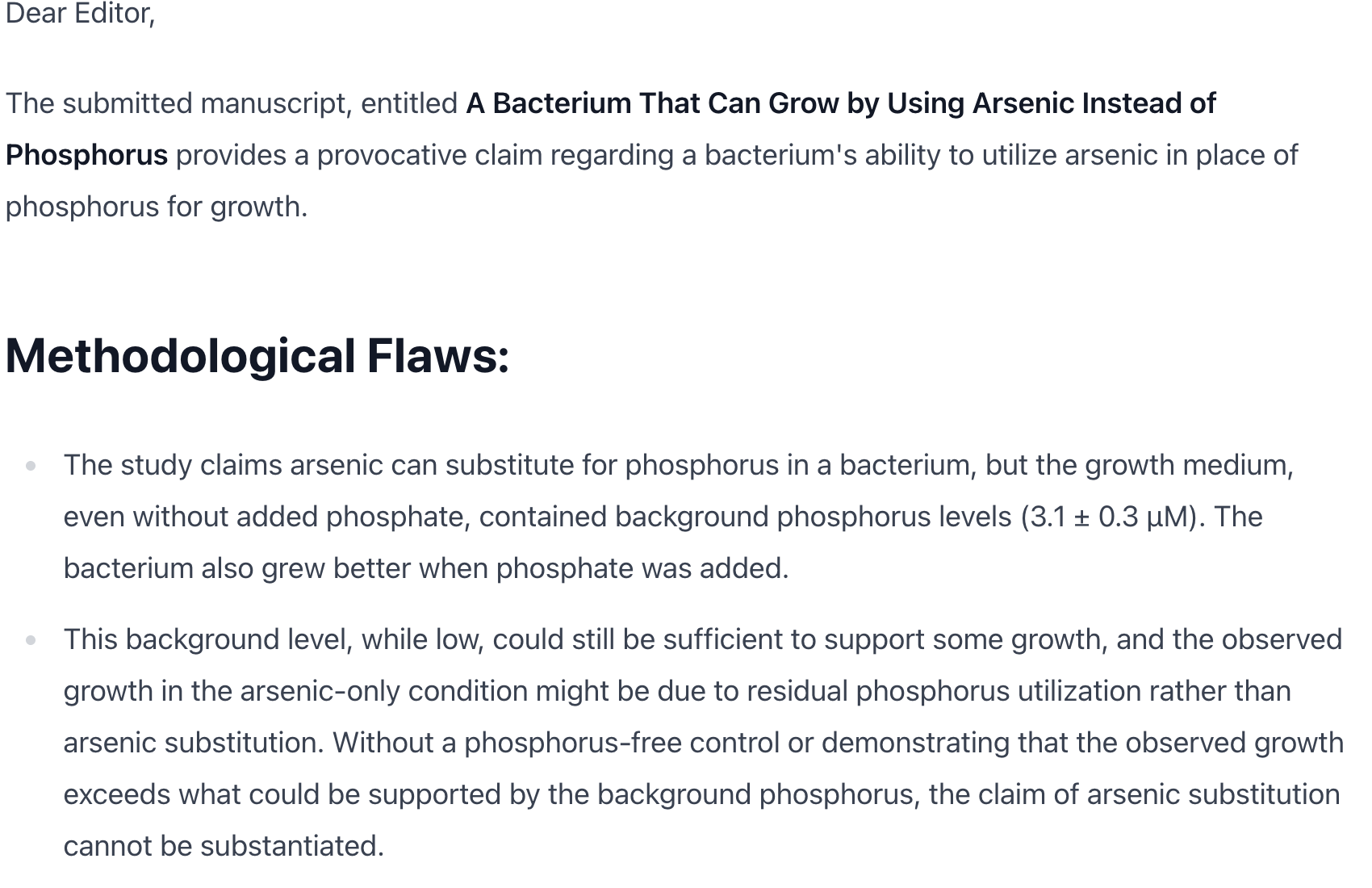After 15 years of scientific debate, Science journal retracted the 2010 "arsenic life" paper in July 2025. This case provides valuable insights into how methodological issues can persist in high-profile publications.
The Original Study and Claims
The 2010 paper by Wolfe-Simon et al. reported that bacteria from Mono Lake could incorporate arsenic in place of phosphorus in their DNA. The implications for astrobiology were significant:
- Potential expansion of habitable environments
- Revised understanding of essential elements for life
- New parameters for extraterrestrial life searches
A NASA press release amplified international attention and sparked intense scientific debate.
Methodological Concerns Raised
The scientific community identified several issues shortly after publication:
- Contamination controls: The "phosphorus-free" growth medium contained trace phosphorus sufficient for bacterial growth
- Analytical limitations: Methods used couldn't definitively prove arsenic incorporation into DNA
- Chemical instability: Arsenate-ester bonds would hydrolyze rapidly in water
- Missing experiments: Key controls needed to validate claims were absent
By 2012, Science published two additional papers that failed to reproduce the original findings.
The Retraction Decision
Science's 2024 retraction statement highlights the reason for retraction:
Given the evidence that the results were based on contamination, Science believes that the key conclusion of the paper is based on flawed data.
Importantly, no misconduct was suggested. The retraction addressed fatal methodological flaws that undermined the main conclusions of the study.
Early Detection of Fatal Flaws
This case illustrates the need for early detection of fatal methodological flaws. Our platform includes a Methodological Reviewer that does just that.
While we believe running this reviewer on your manuscript early, perhaps even at the stage of grant review, is the best way to identify and correct for fatal flaws, we still include this at the stage of pre-screening and peer review to help journals identify critically flawed papers and authors identify whether major claims should be tempered before submission.
